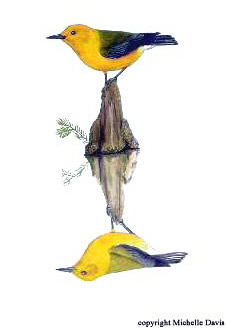| |
SITE DESCRIPTION
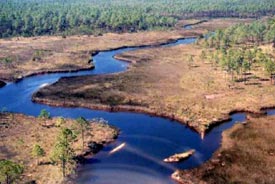 |
The
study area is comprised of a series of coastal hammocks
on shell middens and remnant river levies in the
Grand Bay National Estuarine Research Reserve (NERR)
in Moss Point, MS (Lat. 30.425; Long. 88.529). These
hammocks range in size from 0.03 to 22.10ha and occur
at various distances from the mainland. Dominated
by Live Oak (Quercus virginiana) and Slash Pine (Pinus
elliotti) with a diverse shrub layer, and surrounded
by low, mid-level, and high marsh (Juncus roemerianus,
Spartina alterniflora, and Distichlis spicata), this
hammock system represents an ideal setting in which
to examine the stopover biology of passerine migrants
along an ecological barrier, the Gulf of Mexico.
|
RESEARCH ACTIVITY
This site has
been in operation since 2004. We conduct avian surveys
on six of the islands,
run a banding
station on one island (Ford’s Island), and have
experimental aviaries set up on another island. Ford’s
Island is comprised of three basic habitat types: oak,
pine, and pine savannah. We have approximately 22 mist-nets
set up in the pine and pine savannah habitats. From
September-October, 2004, we banded 1,213 birds of 67
species (0.35 birds/net hour).
Click
here for a table of all birds banded at the
Grand Bay NERR station in the fall of 2004.
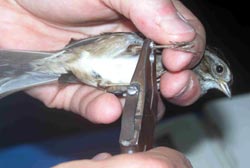
|
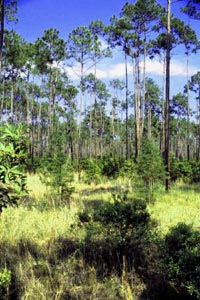 |
THE 2004 CREW
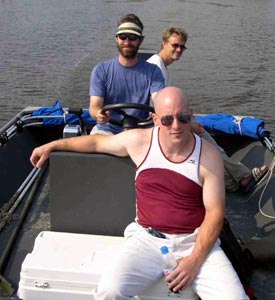
The
University of Southern Mississippi. Last modified:
24 February, 2007
.
Questions and
Comments?
URL: http://www.usm.edu/mbrg/GBNERR.html
AA/EOE/ADAI |
